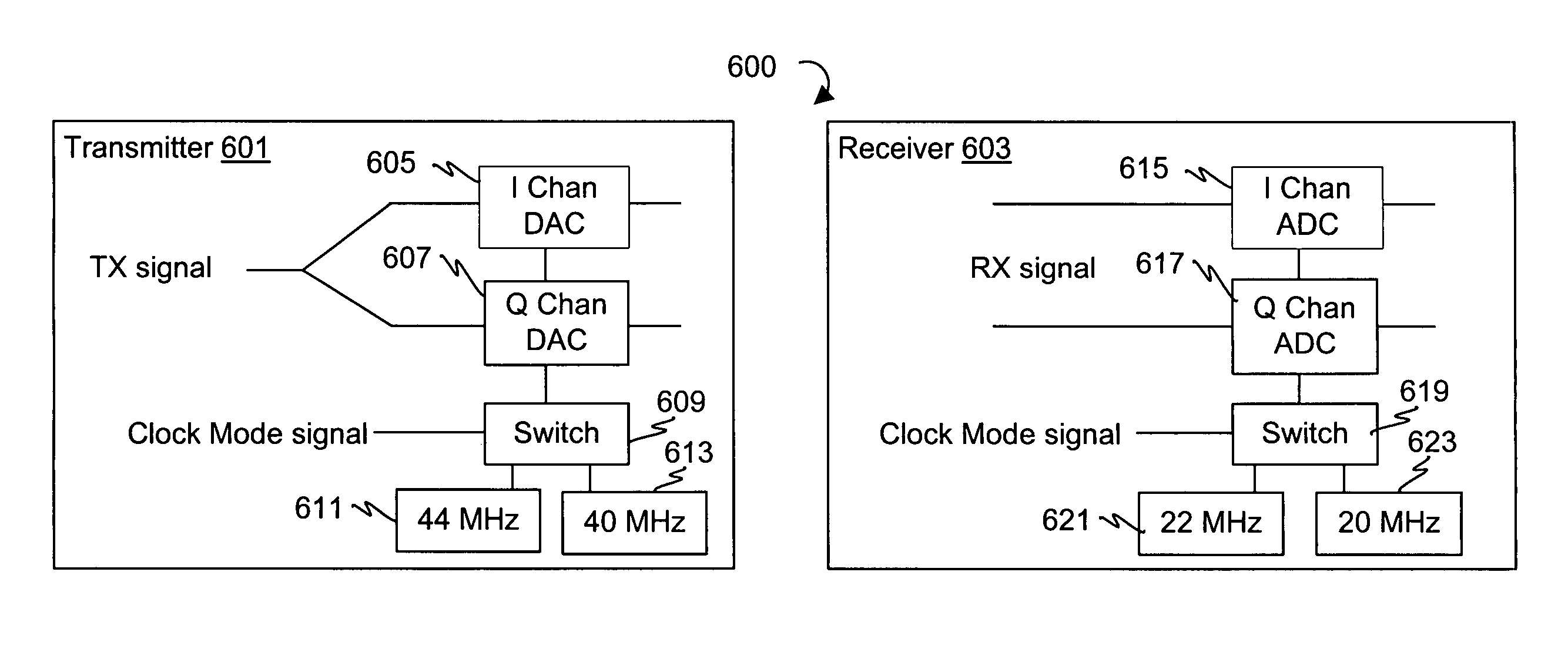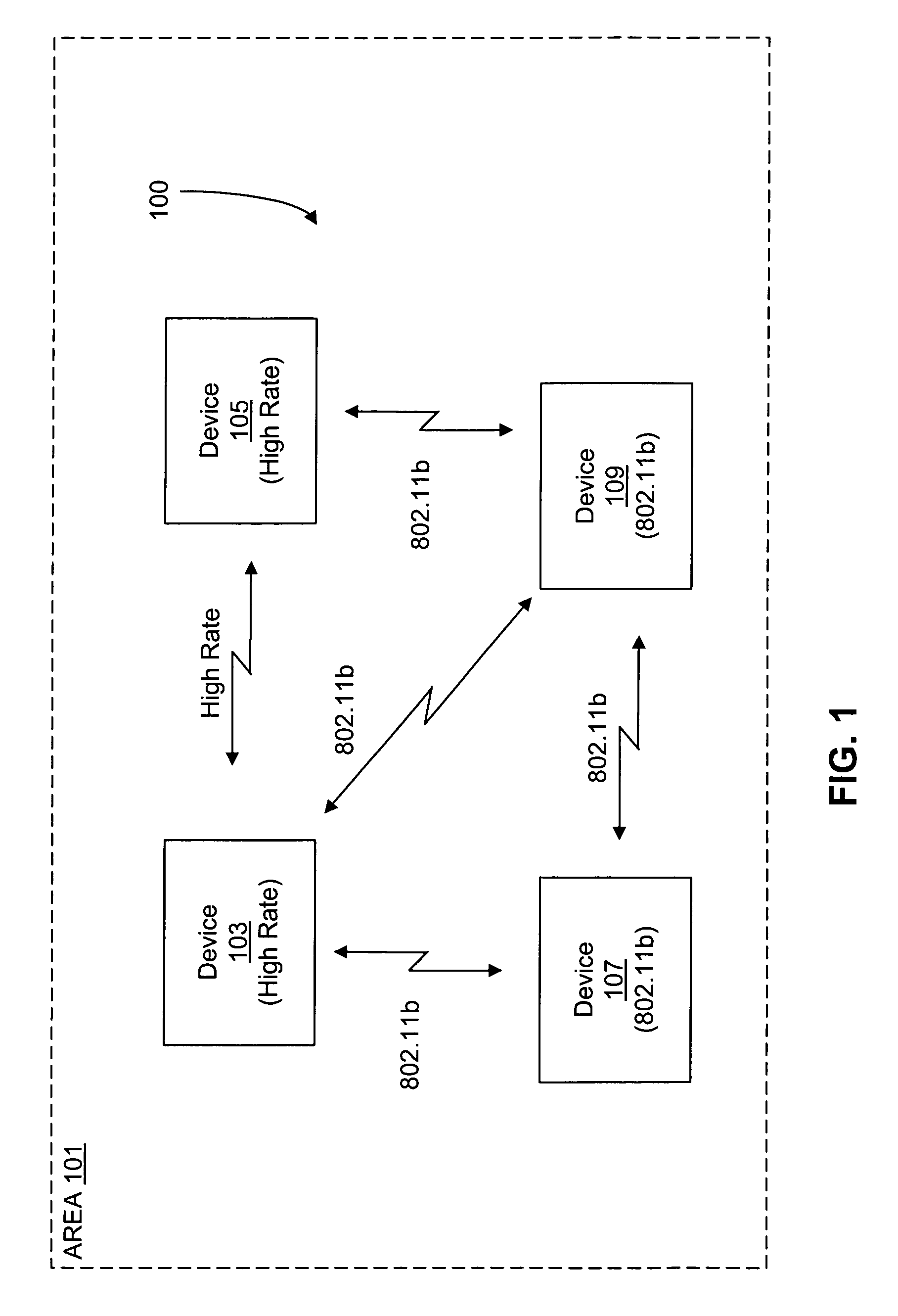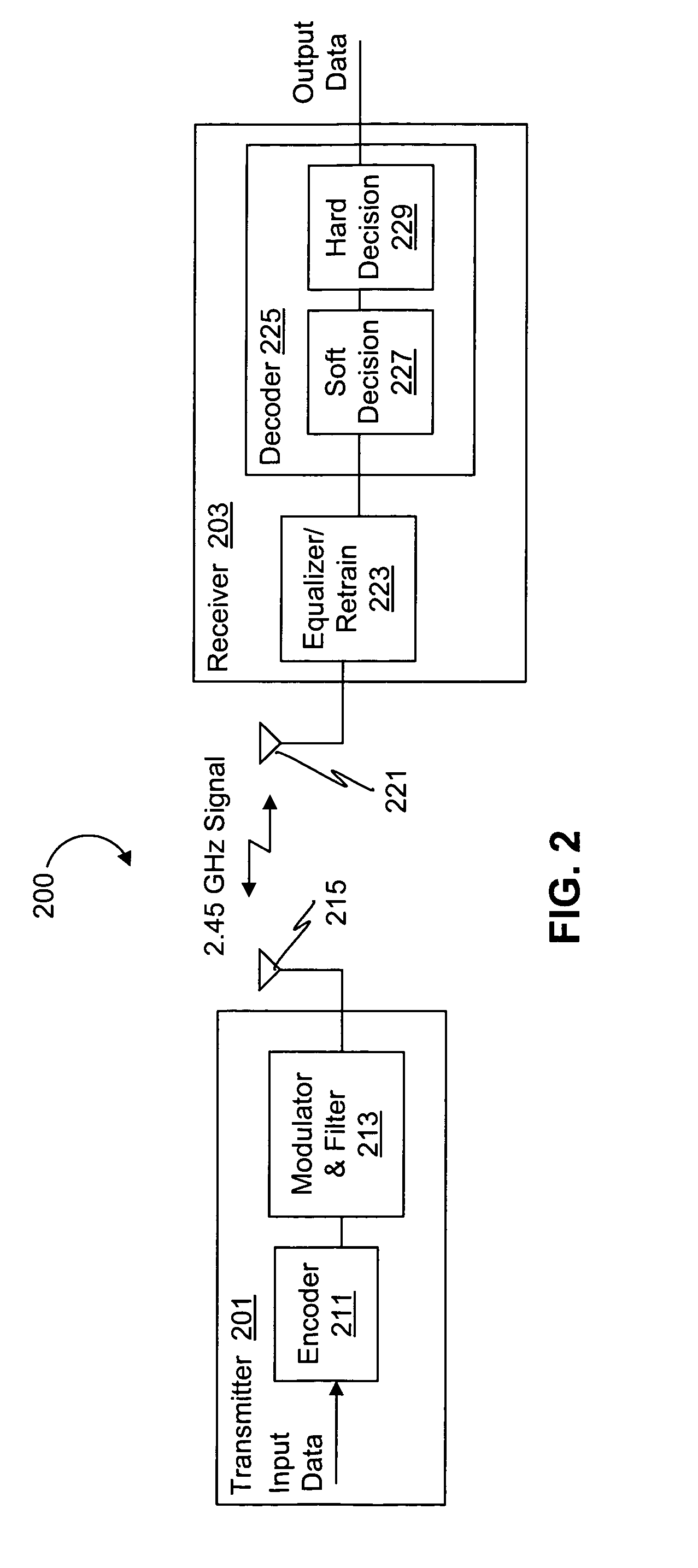Dual packet configuration for wireless communications
- Summary
- Abstract
- Description
- Claims
- Application Information
AI Technical Summary
Benefits of technology
Problems solved by technology
Method used
Image
Examples
Embodiment Construction
[0032]FIG. 1 is a block diagram of a wireless local area network (WLAN) system 100 operating within a particular room or area 101, including four WLAN devices 103, 105, 107 and 109 (103-109) are located within the area 101. The devices 103 and 105 are implemented according to at least one of several embodiments of the present invention with the HRb proposal in mind, whereas the devices 107 and 109 are implemented according to the 802.11b standard. All of the devices 103-109 operate in the 2.4 GHz band. The devices 103-109 may be any type of wireless communication device, such as any type of computer (desktop, portable, laptop, etc.), any type of compatible telecommunication device, any type of personal digital assistant (PDA), or any other type of network device, such as printers, fax machines, scanners, hubs, switches, routers, etc. It is noted that the present invention is not limited to the HRb proposal, the 802.11b standard, the 802.11a standard or the 2.4 GHz frequency band, al...
PUM
 Login to View More
Login to View More Abstract
Description
Claims
Application Information
 Login to View More
Login to View More - R&D
- Intellectual Property
- Life Sciences
- Materials
- Tech Scout
- Unparalleled Data Quality
- Higher Quality Content
- 60% Fewer Hallucinations
Browse by: Latest US Patents, China's latest patents, Technical Efficacy Thesaurus, Application Domain, Technology Topic, Popular Technical Reports.
© 2025 PatSnap. All rights reserved.Legal|Privacy policy|Modern Slavery Act Transparency Statement|Sitemap|About US| Contact US: help@patsnap.com



